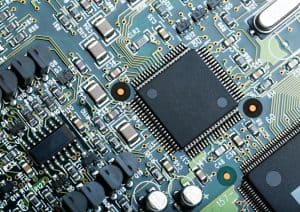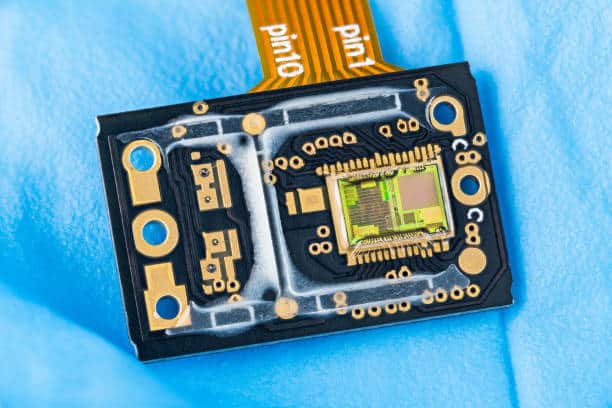In today’s fast-evolving electronics industry, flexible printed circuit boards (FPCBs) have become a cornerstone for innovation. From wearable electronics to aerospace systems, flexible PCBs offer unmatched versatility, lightweight design, and space-saving capabilities compared to traditional rigid boards. However, choosing the right flexible PCB manufacturer in the USA is critical to ensuring product reliability, cost-effectiveness, and long-term performance.
If you are evaluating partners for custom flexible PCB fabrication, this guide will walk you through the essential factors you must consider—covering materials, certifications, turnaround times, and costs. We’ll also highlight how leading companies like MKTPCB can provide expertise and high-quality solutions for your project.
Why Flexible PCBs Are Driving Modern Electronics
Flexible PCBs, often referred to as flex circuit boards, are thin, bendable electronic interconnects that allow designers to create compact, lightweight, and highly reliable devices. Unlike rigid PCBs, flexible boards can twist, fold, and flex without breaking, making them ideal for:
- Wearable electronics such as fitness trackers, smartwatches, and medical patches.
- Aerospace and defense applications where weight reduction and durability are crucial.
- Consumer electronics like smartphones, tablets, and cameras.
- Automotive systems, including sensors and infotainment systems.
With demand rising, partnering with the right flex PCB manufacturer USA is no longer optional—it’s a competitive advantage.
Key Considerations When Choosing a Flexible PCB Manufacturer
1. Expertise in Custom Flexible PCB Fabrication
Every project is unique, requiring precise design, material selection, and manufacturing techniques. A reliable flexible printed circuit board supplier should provide:
- Custom flexible PCB fabrication services tailored to your application.
- Expertise in single-sided, double-sided, and multilayer flex PCB manufacturing.
- Experience with rigid-flex PCB manufacturing, which combines flexible and rigid sections for maximum versatility.
Look for a manufacturer that can handle everything from prototypes to large-scale flex circuit board production.
Prototyping and Scalability
Before mass production, prototyping ensures that your design performs as intended. Companies like MKT flexible PCB prototype services offer fast turnaround times, allowing you to validate your design and minimize costly errors.
Ask if the manufacturer offers:
- Rapid prototyping for design testing.
- Seamless transition from prototype to production.
- Engineering support for design optimization.
Material Selection and Fabrication Capabilities
The performance of a flexible PCB largely depends on the materials used. Common options include:
- Polyimide flex PCB fabrication – Polyimide is the most popular material due to its flexibility, durability, and ability to withstand high temperatures.
- Copper foils – Provide excellent conductivity and mechanical strength.
- Adhesives and coverlays that protect circuits while maintaining flexibility.
When evaluating a supplier, ask about their material sourcing and whether they can recommend the right materials for flexible PCB design for wearable electronics, automotive, or industrial applications.
Quality Certifications and Standards
In mission-critical industries like aerospace, automotive, and medical devices, certifications are essential. The best multilayer flex PCB manufacturer should comply with international standards such as:
- IPC-6013 (Qualification and Performance Specification for Flexible Printed Boards).
- ISO 9001 (Quality Management Systems).
- UL certification for safety compliance.
These certifications ensure that your flexible PCBs meet strict quality, safety, and reliability standards.
Turnaround Time and Delivery
Speed is often critical, especially for startups and fast-paced industries. When choosing a flex PCB manufacturer USA, evaluate their turnaround capabilities:
- Do they offer expedited custom flexible PCB manufacturing?
- What is their average lead time for prototypes versus mass production?
- Can they handle complex rigid-flex PCB manufacturing within your deadlines?
Cost of Flexible PCB Manufacturing in the USA
Cost is always a consideration, but it shouldn’t be the only deciding factor. The cost of flexible PCB manufacturing USA varies depending on:
- Board size and complexity (single-sided vs. multilayer).
- Materials (polyimide is more expensive but durable).
- Quantity and production scale.
- Additional testing and certifications.
While flexible PCBs can be more expensive than rigid PCBs, the benefits in durability, weight reduction, and design freedom often outweigh the costs.
Engineering Support and Design Assistance
A manufacturer’s role goes beyond fabrication. Look for a partner that offers engineering collaboration, including:
- Flexible PCB design for wearable electronics and IoT devices.
- Signal integrity and impedance control.
- Thermal management strategies.
- Guidance on choosing between single-sided, double-sided, and multilayer designs.
Such support ensures your product not only functions but thrives in real-world environments.
Benefits of Partnering with a Trusted Flexible PCB Manufacturer USA
Working with an established flexible printed circuit board supplier provides several advantages:
- Reliability – High-quality boards with reduced failure rates.
- Scalability – Ability to move from prototypes to large production runs seamlessly.
- Customization – Tailored solutions for industries like medical, automotive, and aerospace.
- Innovation – Access to advanced rigid-flex PCB manufacturing techniques.
Companies like MKTPCB are known for offering all these benefits, making them a trusted partner for businesses across the globe.
FAQs: Choosing a Flexible PCB Manufacturer in the USA
1. What are the typical turnaround times for custom flexible PCB manufacturing in the USA?
Turnaround times depend on design complexity and order volume. Prototypes can take 5–10 business days, while production runs may take 2–4 weeks. Some manufacturers, including MKTPCB, offer expedited services for urgent projects.
- How much does it cost per square inch to produce a flexible PCB compared to a rigid PCB?
On average, flexible PCBs cost $0.50–$1.00 more per square inch than rigid PCBs. This difference is due to the use of premium materials (like polyimide) and more complex manufacturing processes. However, flexible PCBs often reduce assembly costs and improve product reliability.
- What industries most commonly use flexible or rigid-flex PCBs?
The most common industries include:
- Medical devices (wearable monitors, hearing aids).
- Aerospace and defense (avionics, communication systems).
- Consumer electronics (smartphones, tablets, cameras).
- Automotive systems (sensors, infotainment units).
- Industrial equipment (robotics, sensors).
- What materials are best for flexible PCB applications?
The top choices include:
- Polyimide – Excellent heat resistance and flexibility.
- Copper foils – Superior conductivity.
- Adhesives and coverlays – Provide insulation and protection.
For polyimide flex PCB fabrication, polyimide remains the gold standard.
- How do I choose between single-sided, double-sided, and multilayer flexible PCBs?
- Single-sided – Best for simple circuits with minimal routing.
- Double-sided – Ideal for medium-complexity designs.
- Multilayer flex PCBs – Required for advanced applications with high density and complex routing needs.
Your choice depends on circuit complexity, space constraints, and electrical requirements.
- What certifications or quality standards should a flexible PCB manufacturer have?
Always choose a multilayer flex PCB manufacturer that complies with:
- IPC-6013 for flexible board performance.
- ISO 9001 for quality assurance.
- UL certification for safety compliance.
These certifications ensure product reliability, especially in high-stakes industries.
Final Thoughts
Choosing the right flexible PCB manufacturer USA is about more than just price. You need a partner with expertise in custom flexible PCB fabrication, a strong track record in rigid-flex PCB manufacturing, and the ability to scale from prototypes to full production.
By considering factors like certifications, materials, cost, and engineering support, you’ll ensure your project’s success. Companies like MKTPCB offer end-to-end services, including MKT flexible PCB prototype development, polyimide flex PCB fabrication, and large-scale flex circuit board production—making them a trusted choice for businesses seeking high-quality solutions in the USA.
If you’re ready to bring your design to life with expert manufacturing, connect with a trusted partner today and take your electronics innovation to the next level.











